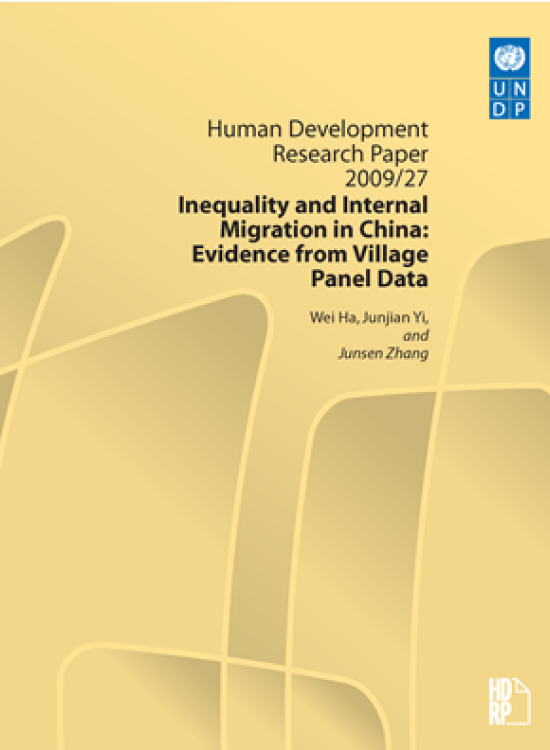Inequality and Internal Migration in China
Evidence from Village Panel Data

Download Report by Language
Document
hdrp200927.pdf
(594.29 KB)
Citation
Ha, Wei, Yi, Junjian, Zhang, Junsen. 2009. Inequality and Internal Migration in China: Evidence from Village Panel Data. New York.
Inequality and Internal Migration in China
Evidence from Village Panel Data
Posted on: January 01, 2009
This paper analyzes the impact of rural-to-urban migration on income inequality and gender wage gap in source regions using a newly constructed panel dataset for around 100 villages over a ten-year period from 1997 to 2006 in China. Since income inequality is time-persisting, we use a system GMM framework to control for the lagged income inequality, in which contemporary emigration is also validly instrumented. We found a Kuznets (inverse U-shaped) pattern between migration and income inequality in the sending communities. Specifically, contemporary emigration increases income inequality, while lagged emigration has strong income inequalityreducing effect in the sending villages. A 50-percent increase in the lagged emigration rate translates into one-sixth to one-seventh standard deviation reduction in inequality. These effects are robust to the different specifications and different measures of inequality. More interestingly, the estimated relationship between emigration and the gender wage gap also has an inverse Ushaped pattern. Emigration tends to increase the gender wage gap initially, and then tends to decrease it in the sending villages.